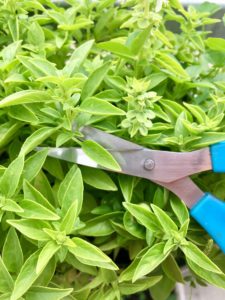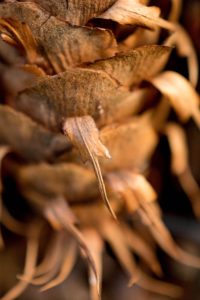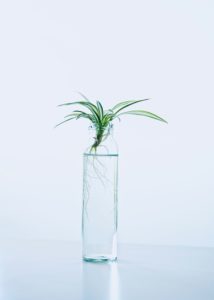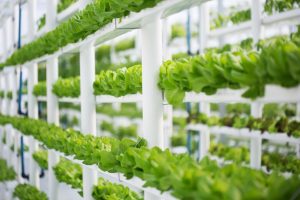Growing bell peppers in hydroponics isn’t the hardest thing to do, but it’s not the easiest either. It’s best to grow bell peppers if you already have some experience with growing in hydroponic systems. If you’re just starting, take a look at our guide of the best (and easiest) plants to try out first.
Bell Peppers: The Basics
Before you start your seeds or clones, take a moment to go over the things you can expect when you grow bell peppers. These are just the basics, but it is the best place to start.
- Many different varieties and colors to choose from
- Not as beginner friendly
- Best in DWC, NFT, and ebb and flow hydroponic systems
- Ideal pH: 5.5-6.5
- Target EC: 2.0-2.5
- Lights on for 14 to 16 hours daily
- Fruits ready for harvest 50 to 80 days post sprouting
- Day neutral (light does not affect flowering/fruiting)
- LED and HID grow lights preferred
- Require hand pollination
- Space farther apart
- Many pepper varieties to choose from
- Ideal for water culture
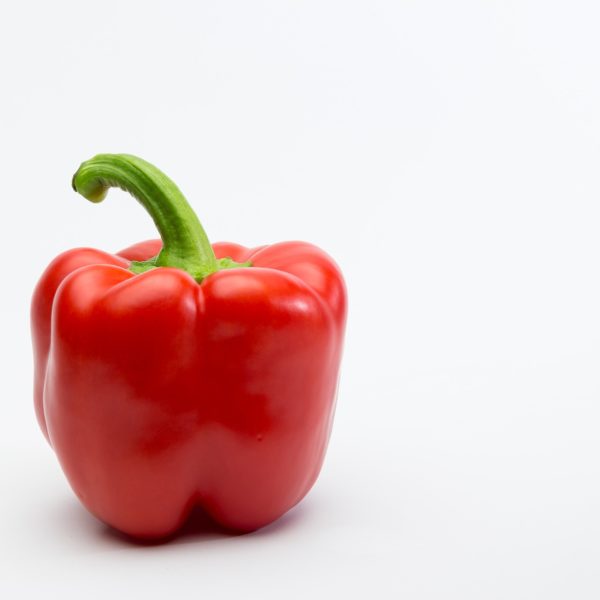
What You Need to Know About Growing Bell Peppers
Peppers are a great plant to grow hydroponically, but they also take more work than leafy greens and herbs. Really, they’re more like tomatoes in terms of their needs. They both need plenty of water and nutrients for fruit production. One of the biggest obstacles you’ll come to is finding a way to support the emerging fruit. Bell peppers can get quite heavy, and you will have to set supports in your hydroponic system to compensate for that.
You can install a rail system, or a trellis-like support to hold the plants up. If you want a cheap and easy solution though, you can also always just set up Styrofoam and plant clips.
While the nutrient needs don’t change much as peppers age, you’ll still want to switch to a flowering formula once they are ready. When they start flowering, you will also have to help them with pollination.
One other thing to mention about bell peppers in hydroponics: they need a lot of space.
It’s best to keep them at least a foot away from each other. Put them too close together, and one may block light from getting to another. Try and give each pepper at least a foot of space, although more is ideal. If you have limited space, but really want to try it out, start with one pepper, or two at the most.
Recommended Equipment
Starting Bell Peppers for Hydroponics
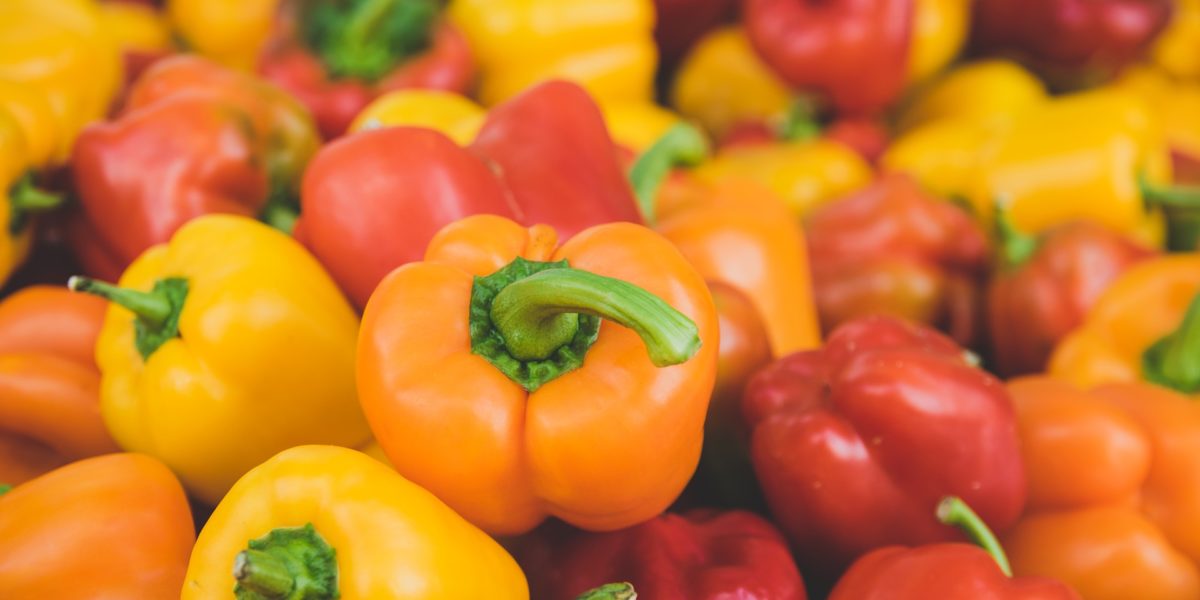
There are two sure ways to start growing bell peppers in hydroponics: seeds and clones. Clones can give you a head start on the time it takes to harvest, but seeds work well too. If you use clones from a pepper plant, give them time in a grow tray with plenty of moisture to help develop roots. Keep blue light on them for at least 8 hours a day and wait at least a week before transplanting.
You can start from seeds too; you just need to give them time to germinate and grow into sprouts. Germinating pepper seeds like temperatures a bit warmer than mature plants. 80 degrees Fahrenheit (26.6C) is ideal, so many growers have a heat mat to make it manageable. Check them regularly to make sure they have enough water.
Begin with a grow tray with starter cubes or small pots with seed starter mix. It’s a good idea to put two to five seeds in each spot, since some may not sprout. If you get lucky and all your seeds do sprout, you can thin them later and pick the best ones. Seeds should germinate within a week or two. You do not need to provide any nutrients while they are germinating.
Once your plants have a good root system, or are at least a couple inches tall, you can transplant them into your hydroponic system.
How to Care for Hydroponic Bell Peppers
As always, practice good hydroponic system maintenance and do regular water changes to keep your system balanced. You should be testing your water for EC and pH regularly to keep your levels in check. Depending on the variety you choose, your pH should be between 5.5 and 6.5. As your bell peppers grow, the target EC rises slightly.
Up to six weeks of age, plan on an EC of about 2.2. Once plants pass that threshold, you can bump up the EC to about 2.5.
Make sure your plants get plenty of light. HID and LED grow lights are best once you’ve transplanted the peppers to your hydroponic system. Before that, fluorescent grow lights are fine. They just won’t give off intense enough light for maturing plants, so make the switch when you move them.
You should have lights on for no less than eight hours every day. For bell peppers, 14 to 18 hours of light each day is optimal.
Maintain a temperature of around 73 to 78 degrees Fahrenheit (22.7-25.5C), but don’t let it get too hot. Peppers may have stunted growth or develop blossom end rot if there’s too much heat. At night, try to lower temperatures by about 10 degrees (65 degrees at night is ideal, or 18C).
A one step nutrient solution mix is good for the early parts of your pepper plants’ lives. Most vegetative formulas with higher nitrogen do well. When your plants get ready to flower though, switch to a bloom nutrient solution formula. Look for a formula containing nutrients with less nitrogen, and higher potassium and phosphorus.
Prune bell peppers for a better harvest
Peppers can grow to be pretty large plants (especially in hydroponics), so pruning does make them much more convenient to grow. That especially true when you’re growing bell peppers in hydroponics. But convenience isn’t the only reason you should prune them back. By keeping them shorter and trimming off some buds, you actually get a better, bigger harvest. Plus it makes it easier to ensure that one isn’t blocking light from another.
Some growers start pruning when a pepper plant is around eight inches tall, but you can safely start when they reach about six inches. Or, 15 to 20cm. Once they reach that height, take off two or three stem buds to keep them shorter. As the pepper branches grow, you’ll see buds forming on those too. Take a bud or two off each branch, but don’t go overboard. It really is a matter of balance.
As always, avoid using your fingers to pinch off buds and prune.
Always prune with sterile, sharp scissors or shears.
Flowering and Fruiting
Because you’re growing bell peppers in hydroponics indoors, you don’t have natural pollinators like bees and other insects. Otherwise, they’d set the pollination process in motion. That means you have to hand pollinate. Don’t worry though, it’s not as hard as it sounds. In fact, some plants only need a fan on light to medium speed. Still, it’s better to hedge your bets and put a little effort into hand pollination.
No matter how you choose to pollinate, having a fan on always helps do the job.
You can use the tried and tested paintbrush method. If you need certainty, this is the method for you. Just use a small, soft paint brush and swipe it along the inside center of the flowers. Then, transfer the pollen to blossoms on another plant. Then, all you need to do is repeat the process for the rest of your plants (and their flowers).
Some growers swear by shaking their plants, and it definitely gets pollen moving around. In commercial operations, many hydroponics greenhouses use plant shakers. These are basically just machines that shake pollen from plants to distribute it. If you want to use the shaking method, make sure to do it every couple of days.
While you might see some pepper production without hand pollination, it won’t be as much as if you do it.
Bell peppers are more susceptible to heat and nutrient issues when they’re flowering. A lack of calcium can lead to blossom end rot. Temperatures that reach too high may cause blossom drop. If either happens, you’ll be lucky to harvest any fruits at all. Make sure you have plenty of ventilation to avoid too much heat and use a bloom formula for the micronutrients you need.
Harvest Time!
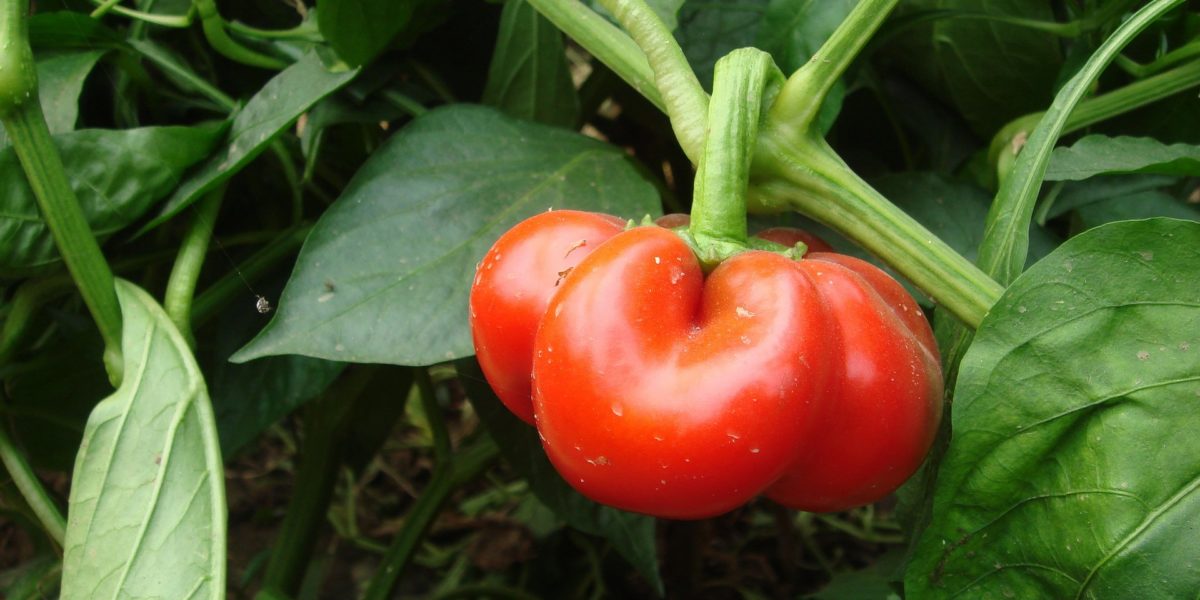
A little while after flowering (and diligent pollination on your part), you’ll start to see bell peppers growing. It’s so easy to get over eager and harvest fruits as soon as they’re a decent size. And depending on the flavor you want, harvesting early just might be the choice for you.
That said, a big draw to bell peppers is their sweeter taste. The longer you allow peppers to stay on the branch, the sweeter they’ll turn out. Of course, that’s all within reason. You don’t want rotting fruit hanging around your hydroponic system. But letting them sit and ripen for an extra week or so won’t hurt anything, and you’ll get a better flavor.
Depending on the variety you’re growing, your plants might keep fruiting after the first harvest. If that’s the case, prune away the fruit carefully. You do not want to damage your stems and foliage if you can keep them for another harvest.
After you harvest them, make sure they’re clean and dry. Excess water on your veggies can make them expire sooner. Then, store them in the refrigerator if you won’t use them right away. In cool temperatures (ideally, the veggies drawer) they can last a little over two weeks.
Frequently Asked Questions
Can I grow different kinds of bell peppers together in hydroponics?
You can, but you need to make sure they have the same, or similar requirements. Look for the ideal EC and pH for each variety you want to put together. Water quality is really important. As long they are each within a couple points of each other, it should be fine. There’s nothing wrong with growing different plants in the same hydroponic system, as long as you can provide the ideal environment for all of them.
